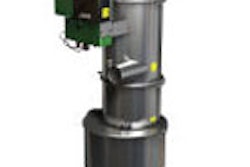LOUISVILLE, Ky. (AP) — Work to destroy the U.S. Army's remaining stockpiles of chemical weapons in Kentucky and Colorado may take longer and cost about $2.5 billion extra, Defense Department officials said Tuesday.
The latest projection added two years to the estimated schedule to finish each job and was described by one watchdog group as a "worst case" estimate. It also raised the total possible cost for the two projects to $10.6 billion, compared to $8 billion previously.
Under the revised timeline, work to destroy chemical weapons at Pueblo Chemical Depot in Colorado might take until 2019. The project at Blue Grass Army Depot near Richmond, Ky., might take until 2023.
Federal officials said in a statement from Aberdeen Proving Ground in Maryland that the revisions reflect a more "conservative and realistic assessment" of operational issues that might arise during the complex process of destroying the aging stockpiles.
"This may include anything from hiring qualified personnel, testing or equipment issues, to acquiring supplies and materials," said Conrad F. Whyne, program executive officer for the Defense Department'schemical weapons destruction program.
But he said the work could be completed sooner if certain operational issues don't occur. Regardless, he said, authorities would seek to conclude the work on a shorter schedule in compliance with safety and environmental considerations.
In January, the Army had destroyed about 90 percent of its chemical weapons stockpiles as it wrapped up work at a chemical depot in Utah's west desert, where its largest cache had been stored.
The U.S. is part of an international treaty to rid the world of chemical weapons, a campaign taking place with mixed success worldwide. That ambitious goal, originally targeted for completion by April 29, is now expected to take years long to achieve.
In the U.S., the Army has finished destroying chemical weapons at depots in Anniston, Ala.; Pine Bluff, Ark.; Newport, Ind.; Aberdeen, Md.; Umatilla, Ore.; and a Pacific atoll where the work started decades ago, according to the Army's Chemical Materials Agency.
That leaves a stockpile of mustard agent at Pueblo., Colo., and a mixed inventory of mustard and nerve agents at Kentucky's Blue Grass Army Depot.
Craig Williams, director of the Chemical Weapons Working Group in Berea, Ky., an advocate for safe disposal, said the new revisions reflect prudent planning by the Defense Department. Due to the complexity of the process and the long time frame, "it's really impossible to predict with any kind of precision," he said.
But he said he doesn't expect the Kentucky and Colorado projects to take as long or cost as much as the newest projections reflect.
"Depending on a number of variables we could see the schedule, and thus the costs, reduced significantly," Williams said, calling the new projection extremely conservative.
U.S. Senate Republican Leader Mitch McConnell was briefed on the revised estimate that could extend the life of the project at Blue Grass depot, said his spokesman Robert Steurer.
"Sen. McConnell's main concern has always been that disposal efforts at the Blue Grass Army Depot are conducted in a safe manner," he said. "By all accounts, this conservative revised schedule places a premium on the safety of the community."
Construction is about half finished on the plant in Kentucky that will destroy the chemical weapons stockpile there, said Katherine DeWeese, a spokeswoman for the chemical weapons destruction program.
Construction is nearly finished on the plant to destroy the chemical weapons at the Pueblo depot, she said. The next step there will be a years-long testing phase.






















